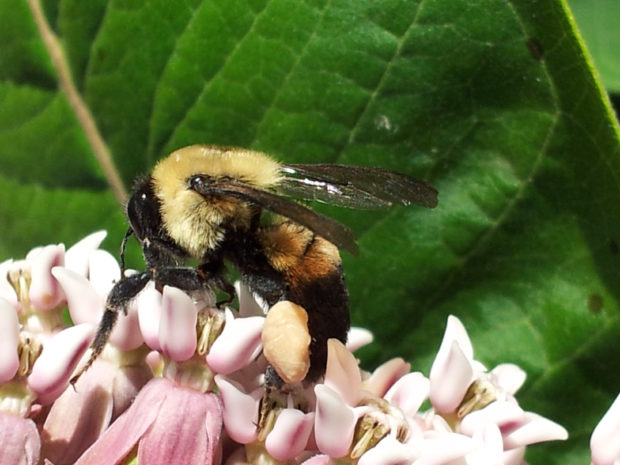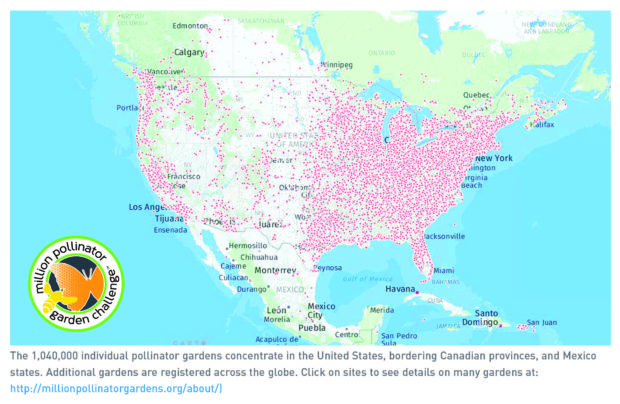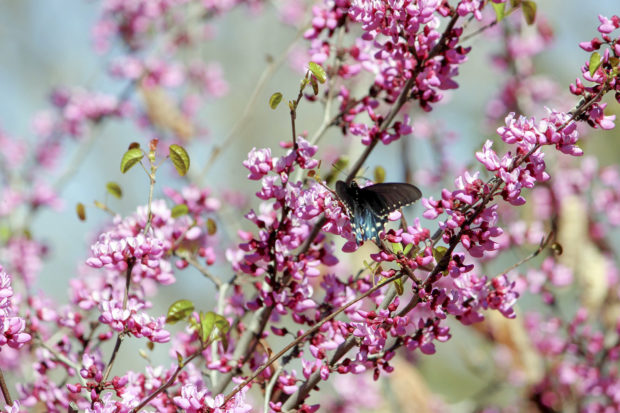We have much more to do and your continued support is needed now more than ever.
Planting for Three Seasons: Keep the Million Pollinator Garden Momentum Alive
It is estimated that there is now at least one or more pollinator gardens per block in most communities across the United States. This is thanks to the approximately 8 million wildlife gardeners who planted and registered over one million pollinator gardens in the Million Pollinator Garden Challenge across North America 2015-2018!

People just like you, as part of The National Wildlife Federation’s Garden for Wildlife movement contributed to over one third of more than the 1 million registered pollinator habitat gardens. Every Certified Wildlife Habitat®, Schoolyard Habitat, Butterfly Hero, Campus Pollinator Pledge and Mayors Monarch Pledge effort was counted. Thank you!
With such a great response, you may ask why more pollinator gardens are needed. Pollinators are cited in a recent UN biodiversity report that estimates that up to one million animal and plant species are threatened with extinction in the coming decades — nearly 40 percent of all species. This requires urgent conservation action as 90 percent of flowering plants rely on pollinators to produce many of the fruits and vegetables that both we and wildlife species consume.

The good news is that many people planting the right types of plants makes a really big difference. Recent studies confirm that sites rich with floral and pollinator friendly plants provide pollinator garden hot spots, which support greater bee density and diversity. Studies on Certified Wildlife Habitats® (properties recognized for providing key elements of food, water, cover, and places for wildlife to raise their young) show a doubling of abundance and diversity of key pollinator species than found on traditionally landscaped properties.
As such, the National Wildlife Federation and fellow co-founders of The National Pollinator Garden Network have announced a 2019 Call to Action to enhance existing gardens with a minimum of three pollinator-friendly plants that bloom in different seasons (spring, summer and fall) to help ensure a consistent food supply for pollinators. New pollinator gardens continue to be necessary to counteract vanishing habitats as well.
Pollinator-friendly plants are… flowering plants, trees and shrubs that offer nutrient-rich nectar and pollen, or serve as host plants for caterpillars. Native plants are important for specialist pollinators, because pollinators co-evolved with native plants. Some non-native and non-invasive flowering plants can support honey bees and other “generalist” pollinators.
Think in Three’s
A simple guide to help you plant powerfully for pollinators is to think in three’s to provide essential elements of pollinator habitat.

Plant a minimum of 3 varieties of blooming nectar plants across 3 seasons: spring, summer, and fall. For summer, make sure to include Milkweed, as monarch butterflies lay eggs on its leaves, and monarch caterpillars will feed, grow, and gain a natural toxin defense against predators. The summer blooms of milkweed (genus Asclepias) also yield nectar for bees and butterflies.
Balance your landscape with 3 types of native plants. Include flowers, woodies and grasses, to provide forage, cover and places to raise young. A “Woodie” is a tree or shrub. An oak tree for example can host over 500 species of butterflies, moths and other insects.
To find the right plants that have co evolved with pollinator species native to where you reside, check out these Eco Region starter lists. Click on the full map link to find your state and the eco region you reside. For more detailed lists put in your zip code to the Native Plant Finder.
In addition, ensure that pollinators have a nearby mineral rich water source, such as a puddling dish, a shallow pan or plate filled with local stones and water.
Every pollinator garden that includes all of the items above, and commits to sustainable practices, such as no pesticides, also qualifies to be recognized as a Certified Wildlife Habitat® Learn more about special incentives during National Wildlife Federation’s celebration of Pollinator Month this June. The week of June 17-23, 2019, host or attend one of the many National Pollinator Week events near you, coordinated by our friends at Pollinator Partnership! Now, go #Garden4Wildlife!






















